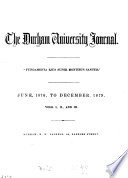 If the numerator and the denominator of a fraction are multiplied by the same number, the value of the fraction is not changed. If the numerator and the denominator of a fraction are multiplied by the same number, the value of the fraction is not changed.  Higher Book - Page 53by William Seneca Sutton - 1896Full view Higher Book - Page 53by William Seneca Sutton - 1896Full view - About this book
 | Walter Wilson Hart - Mathematics - 1923 - 444 pages
...have the value 3, they are equal. Rule. — If the numerator and denominator of a fraction are both multiplied by the same number, the value of the fraction is not changed. This principle is used in changing fractions to a common denominator. 109. The lowest common denominator... | |
 | Joseph Clifton Brown, Albert Clayton Eldredge - Arithmetic - 1924 - 346 pages
...be changed or reduced to lower terms. For example: Dividing both terms of -fy by 4, we get f . When both the numerator and the denominator of a fraction are multiplied by the same number, the fraction is said to be changed or raised to higher terms. For example: Multiplying both terms of f... | |
 | Raymond Asa Kent, Martha C. Olsen, James R. Skiles - Arithmetic - 1927 - 380 pages
...value to 1. 7. The value of an improper fraction is 1 or more. 8. .66| equals f . 9. If both terms of a fraction are multiplied by the same number, the value of the fraction is not changed. 10. Every number between 20 and 30 is divisible by some other number besides itself and one. 11. 7iXl*=18.... | |
 | Arthur McCracken Harding, George Walker Mullins - Algebra - 1928 - 344 pages
...pages for reference. // both the numerator and the denominator of a fraction be multiplied or divided by the same number, the value of the fraction is not changed, This principle is often used to reduce a fraction to its lowest terms, or to change it to a fraction... | |
 | John Ambrose Foote - Materia medica - 1928 - 466 pages
...all work with fractions is that if the numerator and the denominator of a fraction are both divided by the same number, the value of the fraction is not changed. For example, both numerator and denominator of the fraction 8/12 may be divided by 3. The resulting... | |
 | John G. Anderson - Shop mathematics - 1983 - 554 pages
...example: 25 5X5 — .5 y = 5. 30 ~ 6 X 5 6 6 IK.25 — IK5 therefore: 1D3o ~ 1D6~ Equivalent Fractions If both the numerator and the denominator of a fraction...number, the value of the fraction is not changed. i 3X3 9 For example: - This is the same as multiplying by a fraction | , which is equal to 1 . Fractions... | |
 | University of Durham - 1879 - 158 pages
...telegraph wire at £1 1 10s per mile. Prove that if the numerator and denominator of a fraction be multiplied by the same number, the value of the fraction is not altered. Reduce ¡-¿уц ь 7 ¡ ., to their lowest terms and express their difference as a decimal.... | |
 | Industrial equipment - 2003 - 440 pages
...Solution: 75 _ 5 X 15 105~~ 5 X 21 _ 3 X 5 ~ 3 X 7 = (Ans.) Equivalent Fractions If both numerator and denominator of a fraction are multiplied by the same number, the value of the fraction remains unchanged. For example: — = (multiplying top and bottom by 4) _ 24 ~ 28 If both numerator... | |
 | Vicki Niblett - Medical - 2006 - 338 pages
...multiply 4x1 =4. Add this to the numerator 4 + 3 = 7. The new numerator is 7. The fraction is — . 4 If both the numerator and the denominator of a fraction are multiplied or divided by the same number, the value of the fraction stays the same. 1(X2)1 2 4(X2) 8 Multiplying... | |
 | 1900 - 618 pages
...What principle of common fractions do you learn from these examples? A. That when the numerator and denominator of a fraction are multiplied by the same number the value of the fraction is unchanged. Q. Suppose I take the last fraction, \\%%. Divide 5000 by 8, what result will you get? A.... | |
| |